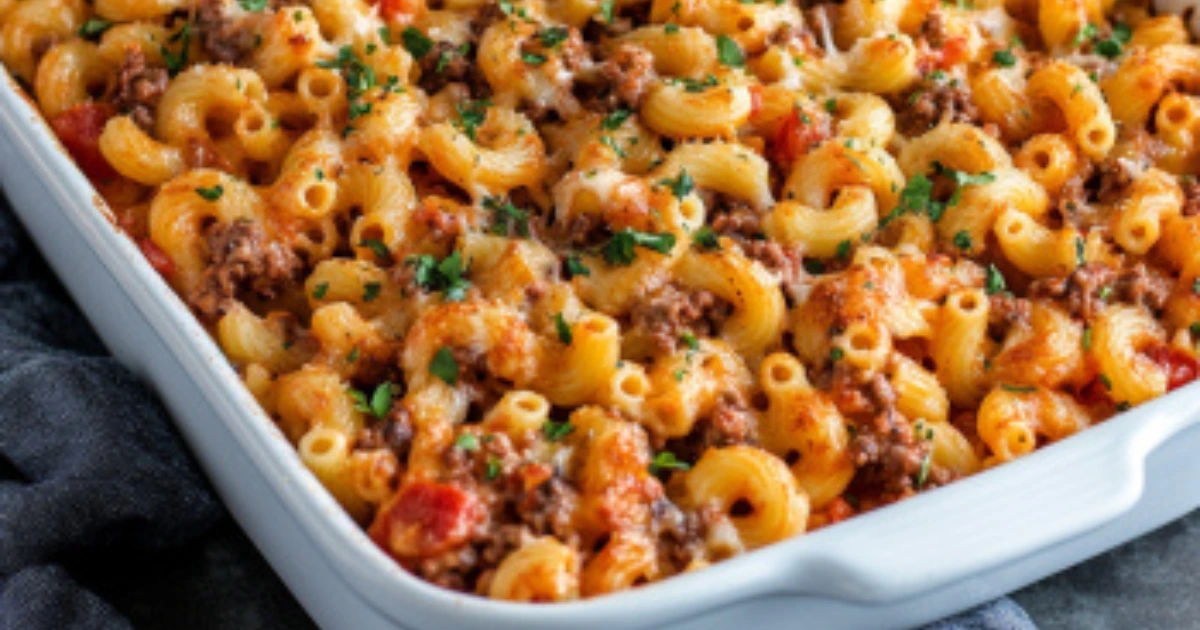Is Ditalini the Same as Salad Macaroni?
When it comes to pasta, there are many different shapes and sizes, each serving a specific purpose in various dishes. If you’ve ever wondered, “Is ditalini the same as salad macaroni?”, you’re not alone. While both are small, tubular pastas, they have distinct differences in terms of shape, size, and traditional uses. This article will explore both pasta types, answer the key question, and dive deep into their unique characteristics and culinary applications.
Table of Contents
Introduction
Before answering the question “Is ditalini the same as salad macaroni?”, it’s important to first understand each pasta shape in its own right.
- Origins and history of ditalini: Ditalini, which means “little thimbles” in Italian, is a traditional pasta from southern Italy. It is particularly popular in soups and casseroles.
- What is salad macaroni?: Salad macaroni is a type of small pasta, commonly used in pasta salads. While it’s not as specifically defined as ditalini, it generally refers to small elbow-shaped pasta used in cold dishes.similar comparisons, like What Does Ditalini Mean in Italian?, to dive deeper into pasta terminology.
The Unique Characteristics of Ditalini
Ditalini stands out in many ways, from its shape to its traditional uses in Italian cooking.

- Ditalini’s small, tubular shape: consists of small, short tubes with slightly rounded edges. This design allows it to hold onto sauces and ingredients, making it perfect for hearty soups.
- Popular uses in Italian cuisine: is often added to soups like minestrone or used in pasta salads. It’s highly versatile and holds its shape well in both hot and cold dishes.
- How it compares to other pasta shapes: Compared to other small pasta shapes, Tiny macaroni is slightly thicker and more substantial, allowing it to absorb more flavors and maintain its texture.
Understanding Salad Macaroni
It is often seen as a go-to choice for cold pasta salads, but it’s essential to differentiate it from ditalini.
- Shape and size of salad macaroni: Typically, salad macaroni refers to small elbow-shaped pasta, although it can come in a variety of small, curved forms.
- Common dishes featuring salad macaroni: It is most commonly used in cold pasta salads, where its compact shape allows for easy mixing with vegetables, dressings, and other ingredients.
- Key differences from ditalini: While both are small pasta types, salad macaroni is often curved (like elbow macaroni), whereas Tiny macaroni is straight and slightly more compact.
Key Differences Between the both
When asking “Is ditalini the same as salad macaroni?”, there are several factors that set them apart. These include their physical appearance, traditional uses, and cooking methods.
- Physical appearance and size: Ditalini is a short, straight tube, while salad is generally curved. Salad is typically longer than ditalini and has a smoother, less ridged surface.
- Traditional uses in recipes: Ditalini is traditionally used in soups, such as minestrone, while salad macaroni shines in cold pasta salads and other chilled dishes.
- Cooking techniques: Ditalini cooks quickly due to its small size and tube-like shape, while salad , due to its elbow shape, may require slightly more time to cook.
Can You Substitute Ditalini for Salad Macaroni?
While ditalini and salad macaroni have differences, there are situations where substitution is possible.
- Situations where substitution works: If you’re making a pasta salad and don’t have salad macaroni on hand, you can use ditalini as a substitute. It will provide a similar texture and hold up well with the other ingredients.
- Adjustments needed for different recipes: If you’re substituting ditalini in a cold dish like pasta salad, you might need to adjust cooking times to avoid overcooking. Additionally, since ditalini is smaller, you may need to use more pasta to match the volume of salad macaroni.
Popular Dishes Featuring Ditalini
Ditalini pasta is a versatile ingredient in many classic Italian dishes. Known for its small, tubular shape, it is often used in both hearty soups and fresh pasta salads. If you’re wondering how to incorporate this unique pasta into your meals, here are some popular dishes that feature ditalini.
Minestrone Soup
- Minestrone soup is one of the most traditional Italian dishes that uses ditalini. The small pasta absorbs the flavors of the vegetables and broth, making it a comforting and filling option.
- Ditalini complements the rich, hearty ingredients in this vegetable-based soup, ensuring each spoonful contains a balance of pasta, legumes, and veggies.
Pasta Salads
- It is an excellent choice for cold pasta salads. Its compact size works well in both creamy and vinaigrette-based salads, ensuring an even distribution of sauce.
- A popular variation includes combining ditalini with fresh vegetables, cheese, and a tangy dressing for a light, satisfying dish perfect for picnics or potlucks.
Baked Ditalini with Cheese
- For a comforting baked dish, try using Tiny macaroni in a cheesy pasta bake. This dish combines cooked ditalini with béchamel sauce, cheese, and herbs, then bakes until golden and bubbling.
- The pasta’s small size helps it absorb the rich flavors of the sauce, making each bite creamy and satisfying.
Italian Sausage
- Ditalini pairs wonderfully with Italian sausage in a savory one-pan meal. Cooked with tomatoes, garlic, and herbs, this dish becomes a hearty main course perfect for family dinners.
- The small tubes of ditalini absorb the sauce and sausage flavors, offering a satisfying texture to balance the richness of the dish.
By incorporating ditalini into your meals, you can elevate simple dishes to new levels of flavor and texture. Whether in a soup, salad, or main course, this versatile pasta is a great addition to any recipe.
This section highlights how ditalini is used in popular Italian dishes, making it clear to readers how versatile and flavorful this pasta shape can be.
Innovative Uses in Modern Recipes
Both are versatile, but they are used differently in modern cooking. When considering “Is ditalini the same as salad macaroni?”, it’s crucial to understand how each is used creatively.
- Incorporating Ditalini in Modern Recipes: Can be used in new, creative dishes such as pasta bakes or casseroles, where its small size allows it to absorb rich, creamy sauces.
- Salad Macaroni’s Role in Contemporary Meals: Salad macaroni, often paired with vibrant, fresh ingredients, works well in quick salads or cold pasta dishes.
The flexibility of both pastas opens up numerous possibilities for modern recipes.
Popular Dishes Featuring Salad Macaroni
Salad macaroni, while simpler, remains a staple in certain beloved dishes. If you’re wondering “Is ditalini the same as salad macaroni?”, knowing the classic dishes that use each can help you decide which pasta to use.

- Classic macaroni salad: Salad macaroni is perfect for traditional macaroni salad, where its shape allows it to hold up well with creamy dressings and crunchy vegetables.
- Creamy casseroles: Salad macaroni also works wonderfully in baked pasta casseroles, where its small size allows it to absorb the sauce.
- Quick, family-friendly meals: Salad macaroni is ideal for quick, satisfying meals that kids will love. Pair it with simple tomato sauce or cheese for a fast dinner.
Cooking Tips for Both Pasta Types
To get the best results when cooking either ditalini or salad macaroni, it’s essential to know the proper techniques. Here are some helpful tips for both pasta types.
- Achieving the perfect texture: Both pastas should be cooked al dente to avoid a mushy texture. For ditalini, watch the time closely since its small size cooks quickly.
- How to prevent overcooking: Always keep an eye on the pot to prevent overcooking, especially with smaller pasta like ditalini or salad .
- Storage tips for cooked pasta: If you have leftover pasta, store it in an airtight container in the refrigerator for up to 3 days. Reheat with a little water or sauce to prevent it from drying out.
Nutritional Comparison
When asking “Is ditalini the same as salad macaroni?”, it’s also important to consider the nutritional differences between these two types of pasta.
- Calories and macronutrients: Ditalini and salad macaroni are similar in calorie content, typically ranging between 200-250 calories per cooked cup. Both pastas offer a good source of carbohydrates, but are low in protein and fat.
- Whole wheat and gluten-free options: Both pasta types are available in whole wheat or gluten-free versions. Whole wheat options provide more fiber, while gluten-free varieties are great for those with dietary restrictions.
- Dietary considerations: Whether you’re vegan, vegetarian, or following a gluten-free diet, there are options for both pastas to suit your needs.
How to Choose the Right Pasta for Your Dish
Choosing between ditalini and salad often depends on the dish you’re preparing. Here are a few key factors to help you make the right choice.
- Factors to consider (texture, sauce, cooking time): Ditalini works well in soups or broths where it holds its shape, while salad is better suited for cold dishes or simple pasta salads.
- Dish-specific recommendations: For hearty soups like minestrone, ditalini is the pasta of choice. For a cold pasta salad, salad macaroni is more appropriate due to its shape and texture.
Where to Buy Ditalini and Salad Macaroni
If you’re wondering “Where can I buy ditalini or salad macaroni?”, you have a few options:
- Specialty Italian stores: Look for authentic ditalini at Italian markets or specialty grocery stores that carry imported pasta.
- Online retailers: Many online grocery stores sell both ditalini and salad macaroni, offering a wider variety of brands.
- Popular brands: Brands like Barilla, De Cecco, and La Molisana produce both types of pasta, ensuring you get high-quality options.
Frequently Asked Questions (FAQs)
- Is ditalini interchangeable with salad macaroni?
While both pastas are similar, ditalini is slightly smaller and more tubular than salad macaroni, which is usually elbow-shaped. You can substitute one for the other in some recipes, but the texture and appearance may vary.
- What are the cooking times for each?
Ditalini cooks in about 8-10 minutes, while salad macaroni might take 10-12 minutes, depending on its size and brand.
- Are both pastas suitable for gluten-free diets?
Yes, both ditalini and salad can be found in gluten-free varieties, making them suitable for people with gluten intolerance.
- Which pasta is more versatile?
Both pastas are versatile, but ditalini is often used in more traditional Italian soups and stews, while salad macaroni shines in cold pasta salads and quick, casual dishes.
- Can they be used together in one dish?
Yes, you can mix ditalini and salad macaroni in the same dish. For example, in a pasta salad, using both can create an interesting texture contrast.
- Are ditalini and salad macaroni available outside of Italy?
Both are widely available in grocery stores and online retailers around the world, making them easy to find in most countries.
Conclusion
In summary, “Is ditalini the same as salad macaroni?” is a common question, and while these two pasta shapes share some similarities, they each have distinct characteristics and uses. Ditalini is perfect for soups and stews, while salad macaroni excels in cold pasta salads and baked dishes. Understanding their differences will help you choose the right pasta for any recipe. Whether you are preparing a hot meal or a chilled dish, both pasta types offer versatility, taste, and texture for a variety of culinary creations.

